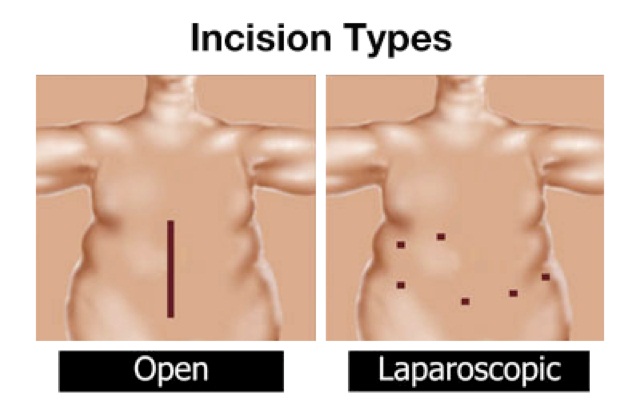Review of Weight Loss Surgery
If you’ve tried just about everything you can imagine to lose weight, sooner or later someone is going to mention weight loss surgery. Weight loss surgery, also known as bariatric surgery is a relatively new set of procedures and has found some success. To find out more about it, and find out if it is for you, read on.
Just What Is Weight Loss Surgery
Weight loss surgery is one of several procedures that effectively reduce the ability for the body to process the food you eat. This can be done in a number of ways, and as you might imagine, each has a particular set of positive and negative elements. First and foremost, each of the methods does involve surgery, which even in the smallest of cases is an invasive procedure that has potential negative health effects.
Types of Weight Loss Surgery
Gastric Bypass is a procedure where the surgeon creates a small stomach pouch and attaches a section of the small intestine to the pouch. This allows food to bypass a portion of the small intestine. Because the stomach pouch is smaller, you feel full sooner and eat less. Bypassing part of the small intestine means you will absorb fewer calories as the food passes through the the intestines to the colon.
Gastric Band or Gastric Banding (sometimes called Lap Band) is a procedure that reduces the amount of food that can be eaten at one time. In this procedure, a band is placed around the upper part of the stomach, which divides the stomach into a small upper pouch and a larger lower stomach. The upper pouch only holds about a half cup of food, so you feel fuller sooner and stay fuller longer. This method tends to allow for normal digestion and absorption. Weight loss with this surgery is typically on the order of 1 to 2 pounds per week.
Sleeve Gastrectomy is a procedure where the size of the stomach is decreased by using a stapling device to create a thin vertical sleeve of stomach, which (like the two above) reduces the amount of food that can be eaten at one time. the sleeve is about the size and shape of a banana. Like above, this makes you feel fuller sooner and stay fuller longer. As much as 85% of the stomach is removed with this process. This process allows for normal digestion and absorption. However, this type of surgery is NOT reversible.
What About The Cost?
As these are invasive surgical procedures, they tend to be expensive. For example, a Gastric Bypass can cost from $18,000 to $35,000, more in some areas. A Lap Band is still costly, at $17,000 to $30,000. Of course, prices can be much lower in Mexico and other foreign countries, but that can be like playing dice with your health in some locations.
Generally speaking, any of the procedures include a hospital facility fee, the fee for the surgeon, pre-operation labs and X-rays, plus follow up appointments for “adjustments or fills” during the first year after the surgery. Post procedure costs for behavior counseling, exercise programs or diet counseling are extra, as are follow up visits after the first year. Some patients also opt for body contouring surgeries (AKA “body lift”) which dramatically increases the costs.
Not all is bleak, however, as a new wave of minimally invasive bariatric surgeries are likely to be coming into use in the near future, which should dramatically reduce the initial costs. However, even with a lower initial cost, there will still be follow on procedures and in many cases counseling that will help the patient to deal with the changes to their digestive system.
Other potential benefits
Some of the surgeries claim other benefits such as improvements in type 2 diabetes, blood pressure, cholesterol, obstructive sleep apnea, acid reflux or GERD, Depression and even osteoarthritis and Joint pain. How many of these results are more related to the loss of weight and which are a direct result of the surgery are not known (or at least published), but many people believe they may be due a combination of the weight loss and the behavioral changes necessary to live with the body after the surgery.
Potential Side Effects
One obvious side effect is the “wallet deflation” that occurs as a result of the initial surgery and ongoing costs of therapy, counseling and typically associated follow up surgical procedures.
Because you are consuming a significantly smaller amount of food, and in the instance of Gastric Bypass, you are unable to absorb some of the nutrients, getting a fully balanced diet is paramount. A number of people develop B12 or iron deficiencies, and about half of those with iron deficiencies develop anemia.
- A small number of people (5% to 15%) experience nausea or vomiting after eating.
- Gastric Bypass patients may have staples pull loose if they try to eat more than they should, which may lead to other complications.
- About 20% of patients need to have some follow up surgery to correct “complications” from their original surgery.and more than 1/3 of patients develop gallstones due to the relatively rapid weight loss.
There are some other, often unmentioned side effects. For example, Gastric Bypass is known to cause an increase of flatulence. Due to the ineffectivity of such products as Bean-o and Gas-x, many patients have resorted to wearing an activated charcoal pad that is worn in the underwear against the buttocks, and deodorizes the gas as it passes through the pad.
The Final Thoughts
As you can see from the above, the existing bariatric surgeries all rely on first reducing the volume of the stomach so you eat less. In the case of Gastric Bypass, a portion of the small intestine is also bypassed, which limits the amount of nutrients and calories) you receive from the food. Each of these surgeries requires a significant change in your lifestyle to accommodate the reduced capacity of the stomach.
If one were to seek the counseling and make appropriate lifestyle changes, it is certainly possible that the same weight loss could be achieved without the need for such invasive surgeries.
Weight Loss Surgery is not the “quick fix” it seems to be. It is costly and requires life changes that may not be reversible, and could have potential detriment later in life. As these surgeries are relatively new, the very long term effects may not yet be known.







